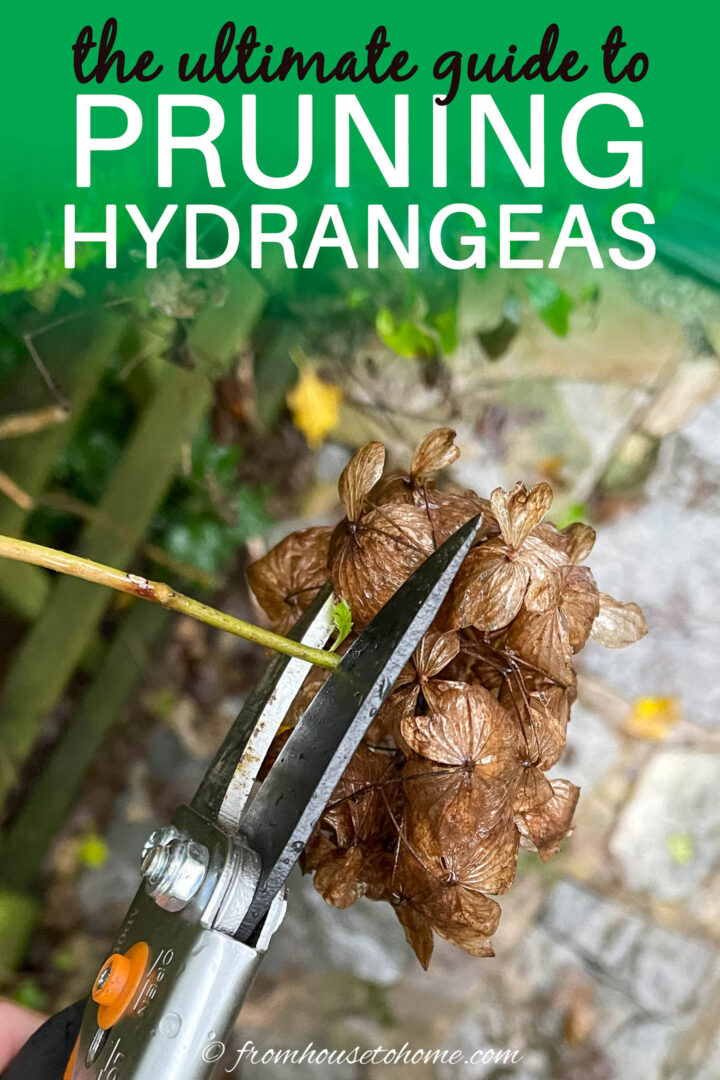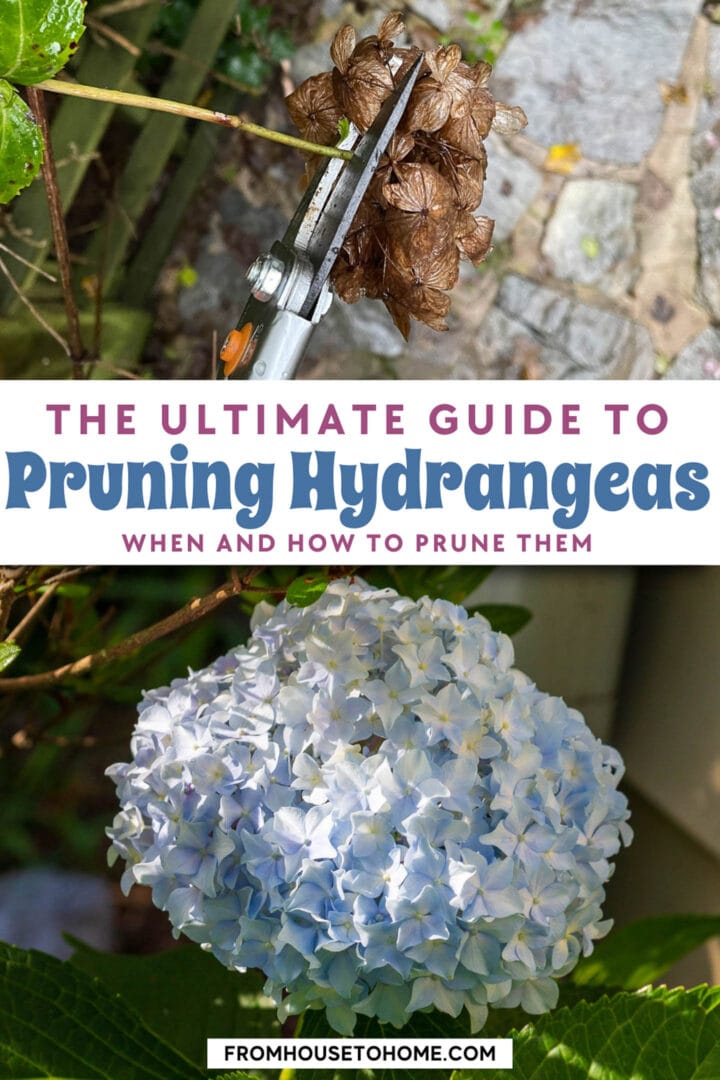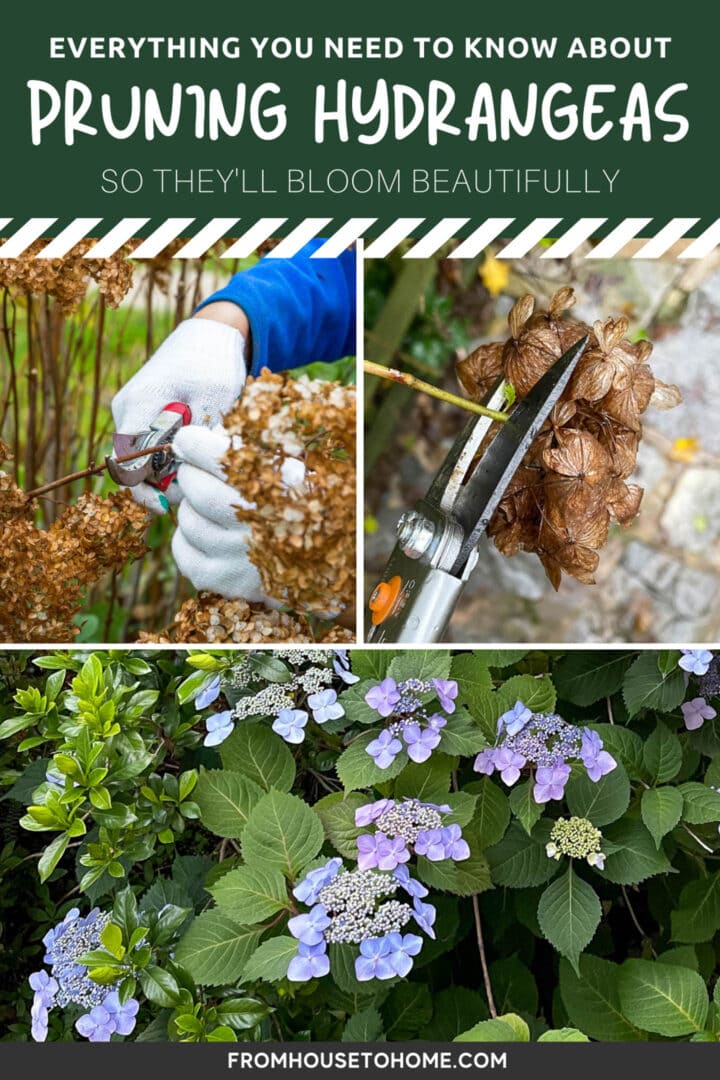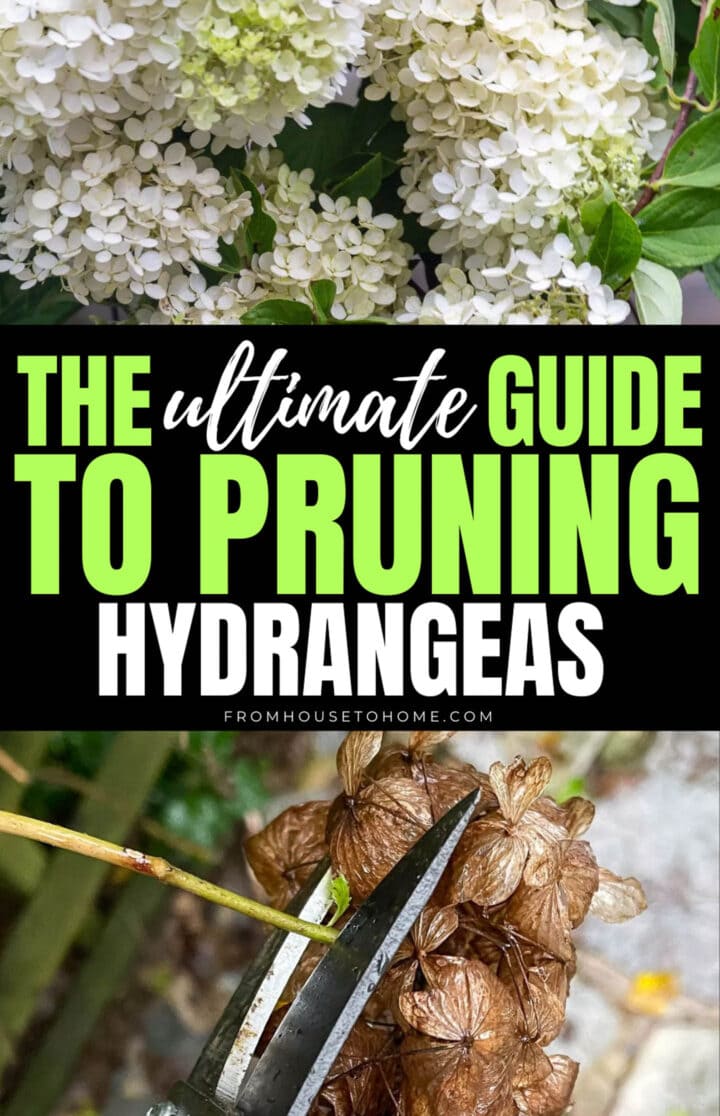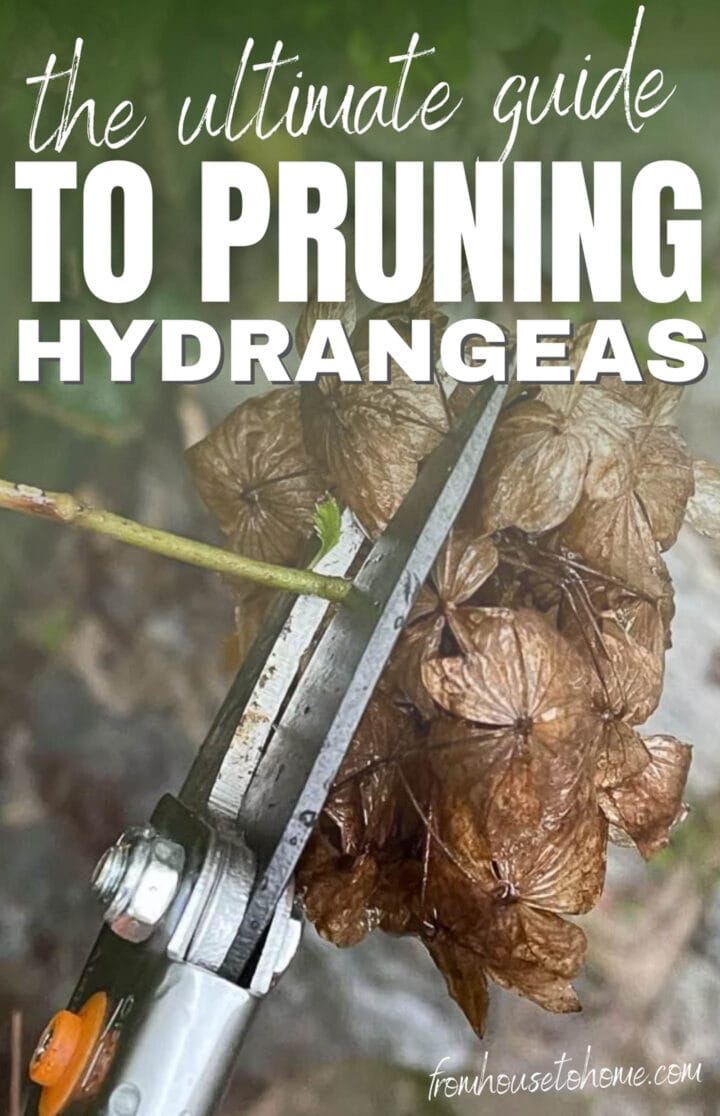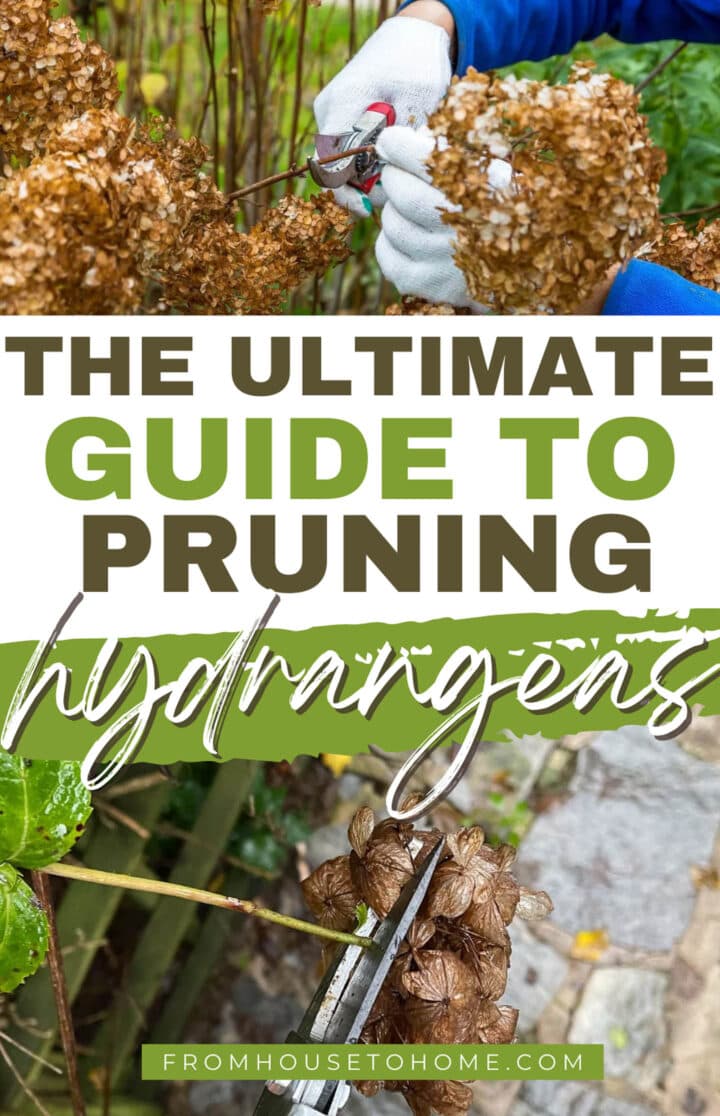Pruning Hydrangeas (The Ultimate Guide)
Hydrangeas are beautiful flowering plants that can add a lot of color to your garden. They're also pretty easy to grow, but if you don't prune them correctly they won't look their best. We'll tell you everything you need to know about pruning hydrangeas so they'll bloom beautifully every year!
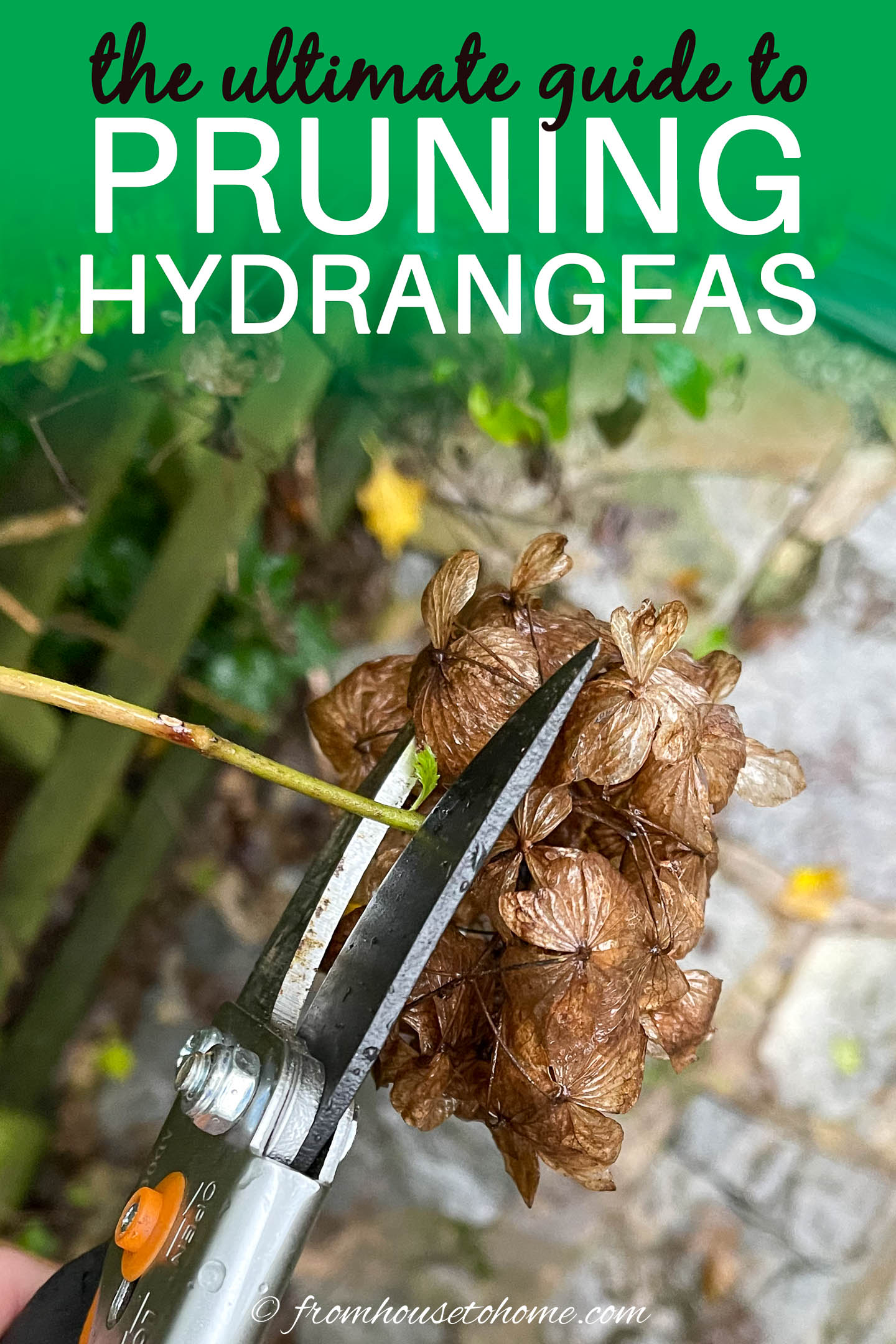
Pruning hydrangea bushes is easy to learn, but it can be confusing because different varieties have totally different pruning requirements.
And cutting them at the wrong time can result in no flowers.
Follow these pruning instructions to make the best decisions about when to prune your bushes and how much to remove for the best results.
Quick pruning tips for Hydrangea bushes
- If in doubt, don't prune. Hydrangeas don't need pruning to stay healthy.
- If you need to prune and don't know when the best time is for your type of Hydrangea, do it immediately after the bush has stopped flowering.
- Try to plant Hydrangeas in a spot that's big enough to allow them to spread out. That way pruning won't be necessary.
- If you did happen to prune your Hydrangea at the wrong time, it's not the end of the world. You may miss a season of blooms, but they will be back better than ever the following season.
Identify what type of Hydrangea you have
The first step to successful pruning is to identify what type of Hydrangeas you have.
There are three kinds:
1 | Old wood varieties
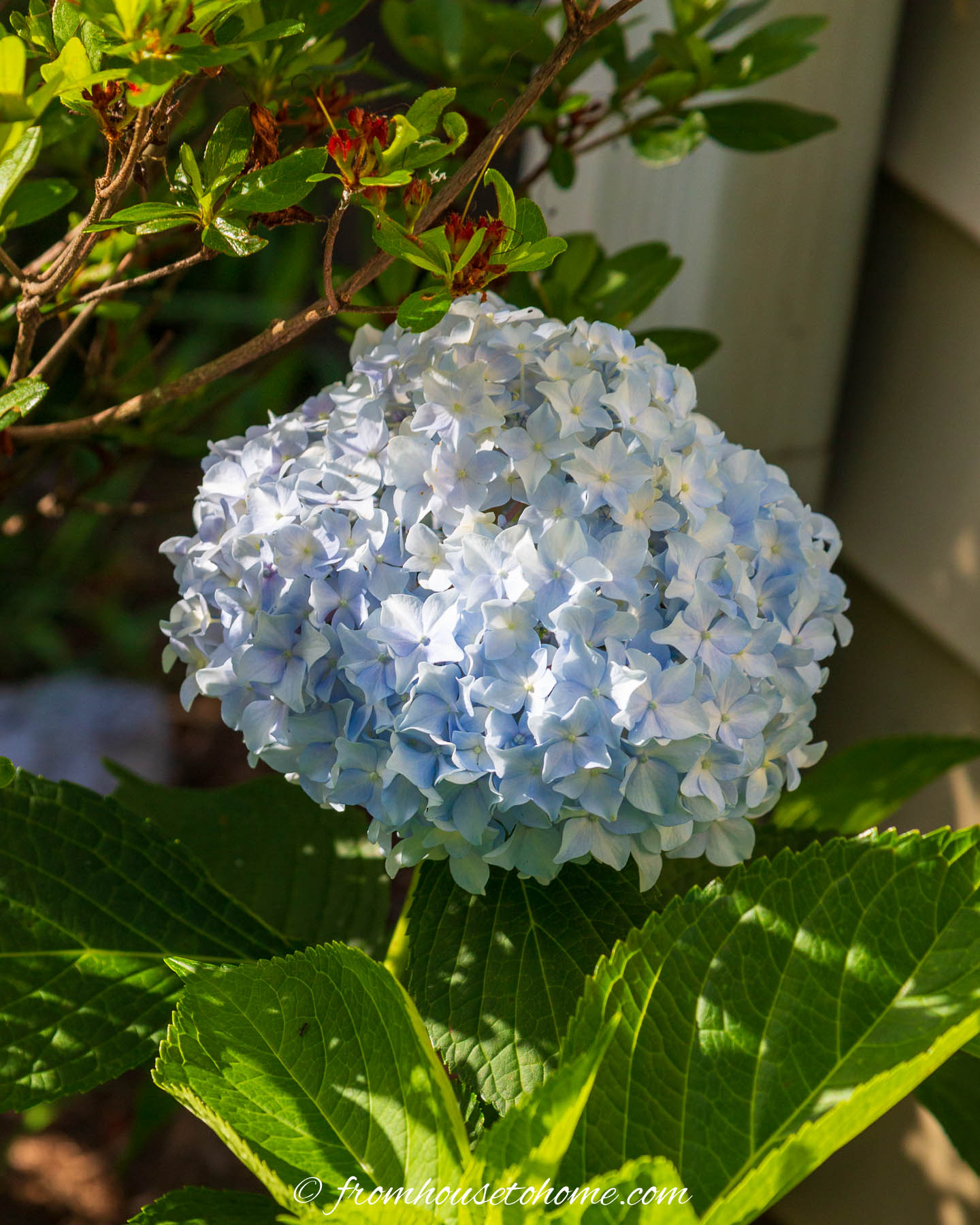
Old wood Hydrangeas are the ones that bloom on last year's growth, with flowers appearing in late spring or early summer.
They set their new buds the previous year as last summer's flowers were fading.
The buds overwinter on the stems until the spring and then bloom when the weather gets warmer.
These include:
- Hydrangea macrophylla (Bigleaf Hydrangeas) including both mophead and lacecap cultivars, except the reblooming ones (covered below)
- Hydrangea serrata (Mountain Hydrangea), except the reblooming ones (covered below).
- Hydrangea quercifolia (Oakleaf Hydrangea)
- Hydrangea petiolaris (Climbing Hydrangea)
2 | New wood varieties
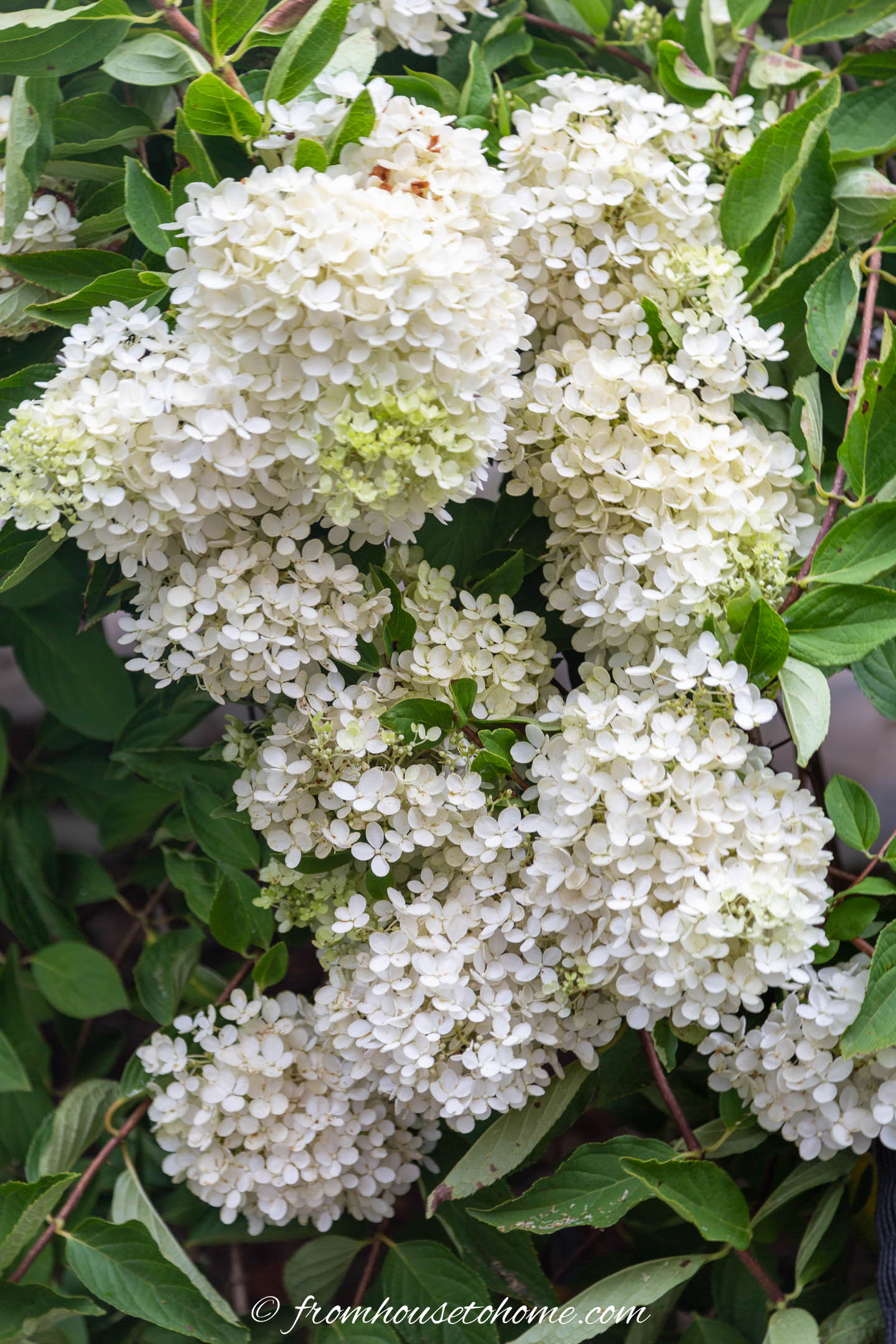
New wood types bloom on this year's new growth.
Which usually means they bloom later in the season because they have a lot of growing to do first.
These include:
- Hydrangea paniculata (Panicle Hydrangea)
- Hydrangea arborescens (Smooth Hydrangea)
3 | Reblooming varieties
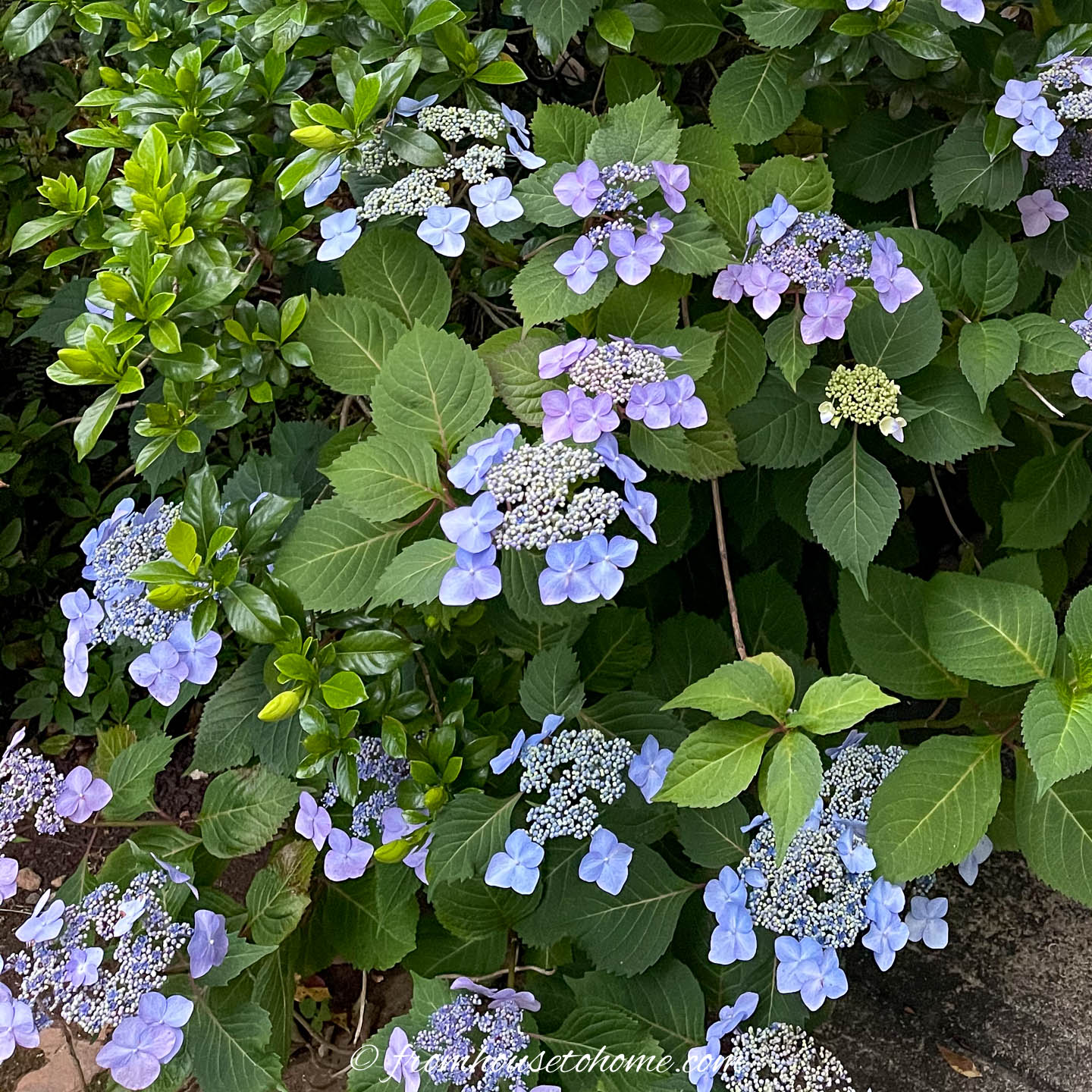
The reblooming varieties are really a combination of the two above.
They have two sets of flowers.
The first batch blooms earlier in the season on last year's stems. Then the second batch blooms later in the season on this year's new growth.
These include:
- newer varieties of Hydrangea macrophylla such as the Endless Summer series
- newer varieties of Hydrangea serrata such as the Tuff Stuff series.
If you're not sure which type your Hydrangeas are, use our Hydrangea identification guide to help figure it out.
How to prune Hydrangeas
1 | Old wood varieties
Hydrangeas that bloom on old wood don't require any pruning if you've planted them in a space that gives them room to grow.
But if you do need to cut them back or shape them, it's best to do it in the summer when the blooms have started to fade.
Pruning them in late summer, fall, late winter or early spring will remove next year's flower buds and cause the plant not to bloom the following summer.
Deadheading
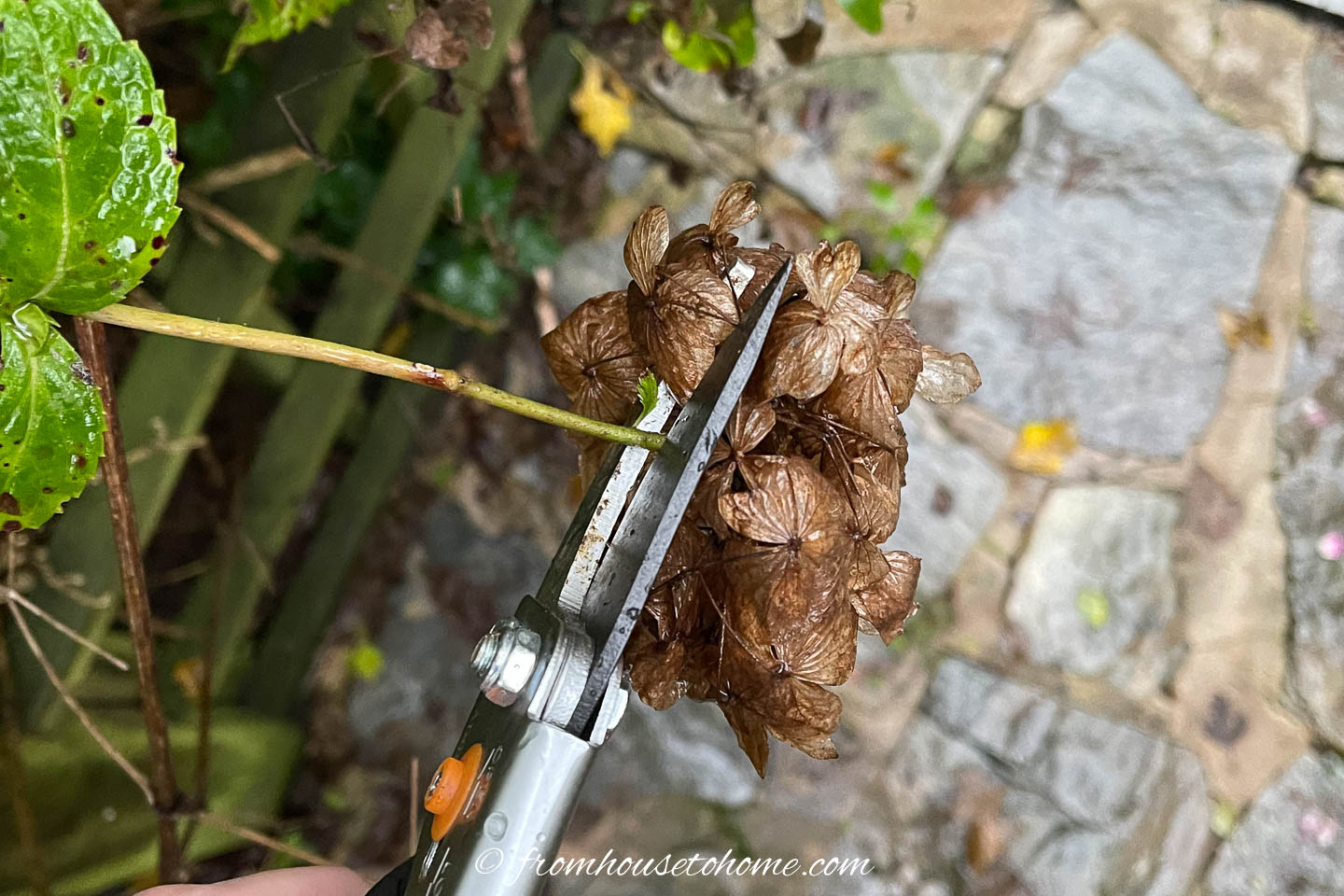
To make the plants look neater, you can remove the old Hydrangea blooms in the summer or fall by snipping them off just below the flower head.
However, I usually leave them there all winter since the dried flowers add interest to the landscape.
Spring trimming
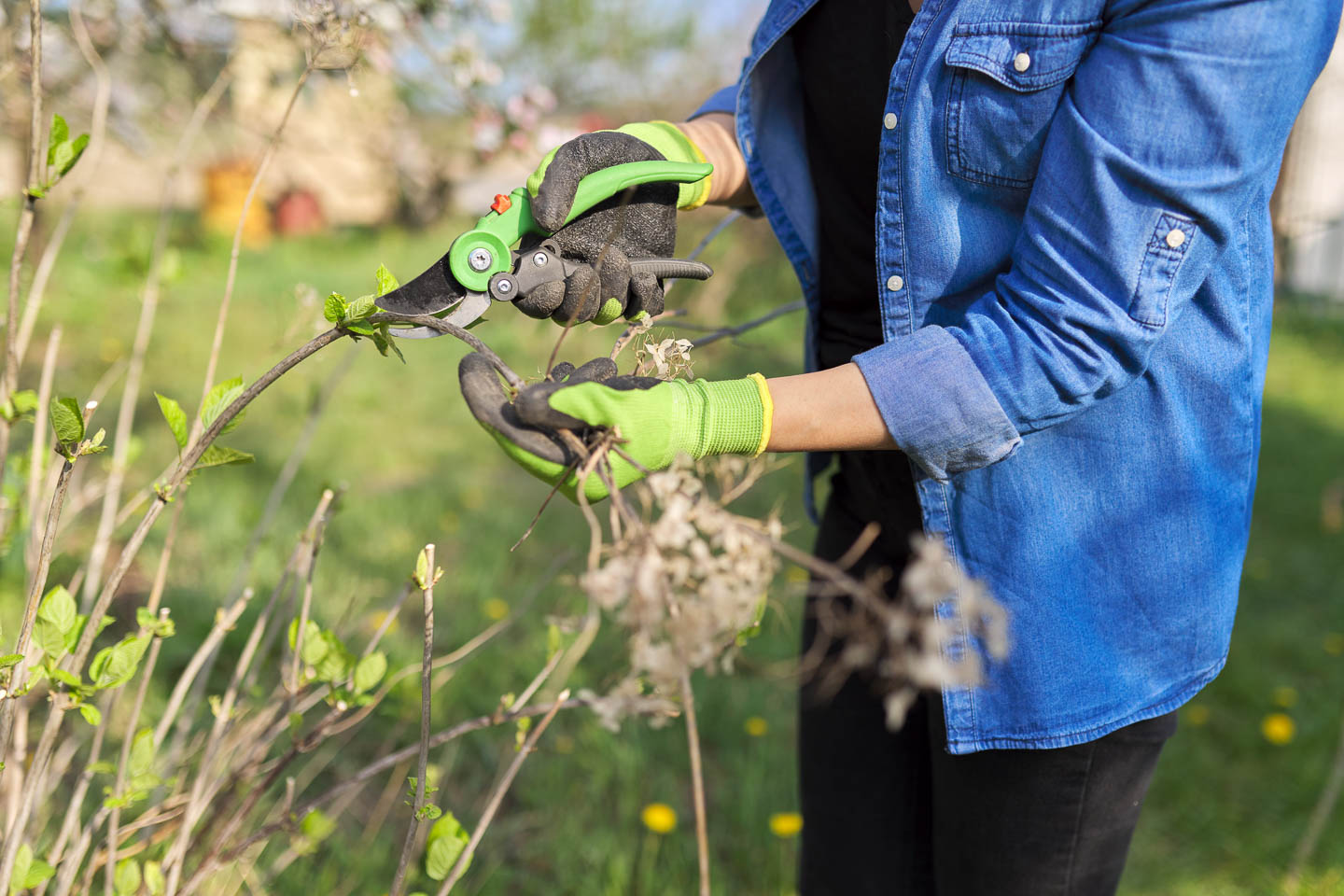
To encourage more blooms (that are usually smaller) trim back the ends of the stalks to the first set of buds (or leaves) when the plants are just starting to grow in the spring.
Then cut out any dead wood.
I do this after I'm sure the last frost date has passed since it can stunt the growth of the whole stem if the new growth gets nipped by cold weather.
2 | New wood varieties
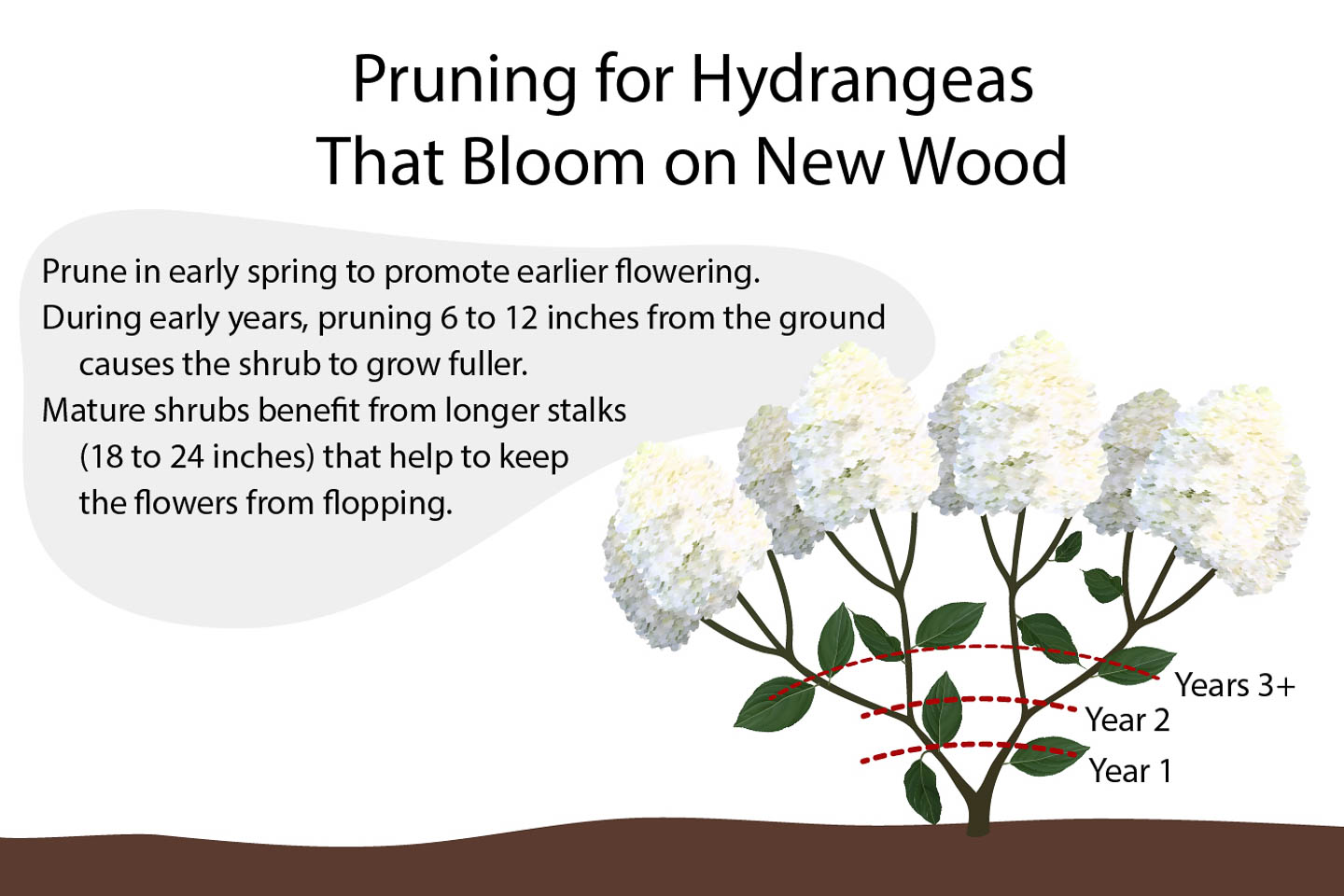
Since new wood varieties bloom in the summer on the stems that just grew in the spring, you don't have to worry about cutting off the buds if you prune at the end or beginning of the growing season.
In fact these bushes often benefit from being cut back pretty hard in the early spring, which encourages more branching and flowers.
In the first couple of years, pruning them almost all the way down to ground level so that the stalks are only 6 to 12 inches high will create a fuller bush.
After that, pruning the branches so they are 18 to 24 inches high provides a sturdy framework for the new growth which can prevent the flowers from flopping.
Try to make the cut right above a pair of healthy buds to encourage quick growth.
If you prefer to have fewer but bigger flowers, cut out some of the stalks altogether. The plant will use the extra energy to increase the bloom size on the remaining branches.
Having said all that, these Hydrangeas will do just fine without regular pruning, as long as you don't mind their size.
Deadheading
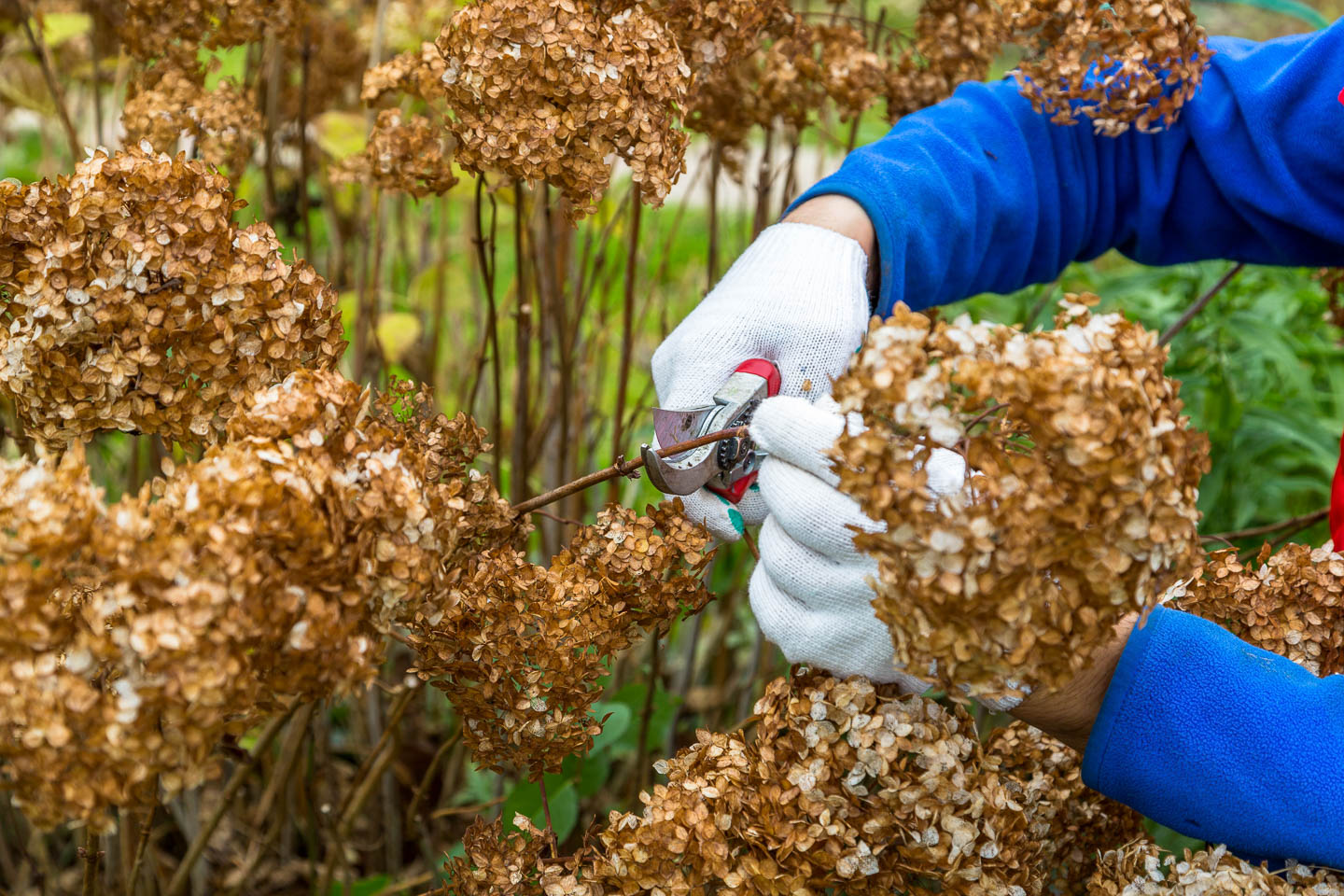
You can remove the dried flowers from the new wood Hydrangeas if you don't like the look of them.
However, I usually leave them on the shrub until spring to provide winter interest in the garden.
3 | Old and new wood varieties
I treat reblooming Hydrangeas that bloom on both old and new wood the same way that I do old wood varieties.
- Don't prune them unless necessary.
- Trim off dead flowers back to the first buds in the spring after the last frost.
- And cut out dead branches as required.
The bad news with the reblooming varieties is if you do need to prune them, timing it so you don't lose any flowers is pretty difficult .
If you prune them in the late spring or summer, you'll cut off the buds for the second batch of this year's flowers. And if you do it in the fall, winter or early spring, you'll cut off the buds for the first batch of next year's flowers.
But the good news is that you should still get some blooms to appear, regardless of when you prune.
More about Hydrangeas
- Why isn't your Hydrangea blooming?
- Hydrangea types and how to identify them
- What to grow with Hydrangeas
Have comments or questions on pruning Hydrangeas? Tell us in the section below.
This post was originally published on October 7, 2021 but was updated with new content on November 23, 2024.

